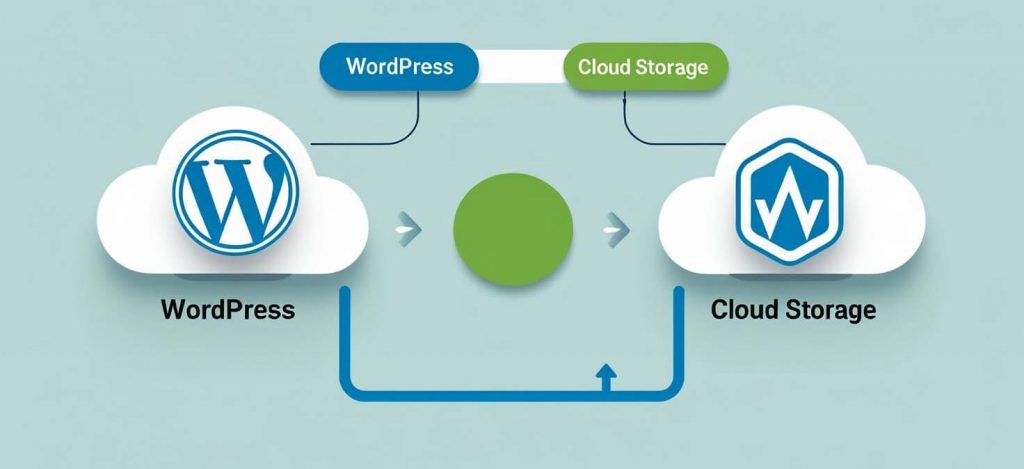From WordPress to Cloud Storage: Comparing Methods for Temporary File Access
in wordpress on July 24, 2025When it comes to temporary file access, two prominent methods have emerged: utilizing WordPress and leveraging cloud storage solutions. Each method has its unique advantages and drawbacks, making it essential to understand how they compare. This blog delves into the nuances of both approaches, providing insights into their functionalities, benefits, and potential limitations.

Understanding Temporary File Access
Temporary file access refers to the ability to store and retrieve files for a limited duration. This is particularly useful for scenarios such as file sharing, collaborative projects, or managing user-uploaded content. The choice of method can significantly impact workflow efficiency, security, and user experience.
Both WordPress and cloud storage solutions offer mechanisms for temporary file access, but they cater to different needs and use cases. Understanding these differences is crucial for selecting the right approach for your specific requirements.
For instance, in collaborative environments where multiple users may need to access and edit files simultaneously, temporary file access can streamline the process. By allowing users to upload files that are only accessible for a set period, teams can work together more effectively without cluttering permanent storage solutions. This not only helps in managing disk space but also ensures that outdated or irrelevant files do not linger, reducing the risk of confusion and errors.
Security considerations play a vital role in the implementation of temporary file access. By limiting the duration for which files are available, organizations can mitigate risks associated with unauthorized access or data breaches. For example, sensitive documents shared for review can be programmed to expire after a certain timeframe, ensuring that they are not accessible indefinitely. This approach not only protects confidential information but also fosters a culture of accountability among users, as they are aware that their shared files have a limited lifespan.
WordPress: A Versatile Solution
WordPress, primarily known as a content management system (CMS), provides a robust platform for managing files. It allows users to upload, store, and share files directly through the interface. This method is particularly advantageous for websites that require frequent updates or user-generated content.
Advantages of Using WordPress for File Access
One of the primary benefits of using WordPress for temporary file access is its seamless integration with existing content. Users can easily upload files alongside their posts or pages, ensuring that the files are readily accessible to visitors. This integration fosters a cohesive user experience, allowing for quick file retrieval without navigating away from the site.
WordPress offers a variety of plugins that enhance file management capabilities. These plugins can facilitate file versioning, access control, and even temporary file expiration. Understanding how plugins can improve WordPress performance helps users choose the right tools to not only manage files efficiently but also optimize overall site functionality based on their specific needs.
Limitations of WordPress File Management
Despite its advantages, using WordPress for temporary file access does come with certain limitations. One significant concern is storage capacity. WordPress hosting plans often come with storage limits, which can be restrictive for websites that handle large files or high volumes of uploads.
Also, security can be a concern. While WordPress has made strides in enhancing security, it remains a popular target for hackers. If sensitive files are stored on a WordPress site, there is a risk of unauthorized access, particularly if proper security measures are not implemented.
Cloud Storage Solutions: A Robust Alternative
Cloud storage solutions have gained immense popularity for their scalability and security features. Services like Google Drive, Dropbox, and Microsoft OneDrive offer users the ability to store, share, and access files from anywhere with an internet connection. This flexibility makes cloud storage a compelling alternative for temporary file access.
Benefits of Cloud Storage for Temporary File Access
One of the standout benefits of cloud storage is its virtually unlimited storage capacity. Users can easily scale their storage needs without worrying about hitting a ceiling, making it ideal for businesses that handle large files or extensive data sets. This scalability is particularly advantageous for collaborative projects where multiple users may need to access and edit files simultaneously.
Cloud storage solutions typically come with robust security features. Most providers implement encryption protocols, multi-factor authentication, and regular security audits to protect user data. This focus on security makes cloud storage a safer option for sensitive files compared to traditional methods.
Challenges of Cloud Storage Solutions
While cloud storage offers numerous benefits, it is not without its challenges. One potential drawback is the reliance on internet connectivity. Accessing files stored in the cloud requires a stable internet connection, which can be a limitation in areas with poor connectivity or for users on the go.
The user experience can vary significantly between different cloud storage providers. Some may offer more intuitive interfaces and better integration with other tools, while others may be cumbersome to navigate. This inconsistency can impact productivity, especially if users are not familiar with the platform.
Comparative Analysis: WordPress vs. Cloud Storage
When comparing WordPress and cloud storage solutions for temporary file access, several factors come into play. Each method has its strengths and weaknesses, making it essential to evaluate them based on specific needs.
Storage Capacity and Scalability
WordPress typically has storage limitations based on the hosting plan, which can be a significant constraint for users with extensive file management needs. In contrast, cloud storage solutions offer virtually unlimited storage options, allowing users to scale their storage as needed without the constraints of a hosting plan.
Security and Access Control
Security is a critical factor when considering file access methods. While WordPress can be secured with plugins and best practices, it remains vulnerable to attacks. Cloud storage solutions, on the other hand, often provide built-in security measures that are regularly updated, making them a more secure choice for sensitive files.
User Experience and Integration
The user experience can vary significantly between WordPress and cloud storage. WordPress offers a more integrated experience for users already familiar with the platform, while cloud storage solutions may require additional steps for file sharing and access. However, cloud storage often provides better collaboration features, making it easier for teams to work together on shared files.
Conclusion: Choosing the Right Method
Ultimately, the choice between WordPress and cloud storage for temporary file access depends on specific needs and circumstances. For those who prioritize seamless integration with existing content and require basic file management capabilities, WordPress may be the ideal solution. However, for users who need scalable storage, enhanced security, and robust collaboration features, cloud storage is likely the better option.
Evaluating the unique requirements of your project or business will help determine the most suitable method for temporary file access. By understanding the strengths and limitations of each approach, users can make informed decisions that enhance their file management strategies.





